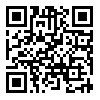1. Abdullah, b. Rangriz, H. Abbasian, H. Rahmani, F. 2020. Extractive Themes of Employees' Career Progress Based on Diverse Career Orientation: A Qualitative Study by Inductive Content Analysis. Journal of Psychological Sciences. The nineteenth period. No. 90. 697-687.
2. Ataf, Z., Ghasemi Hamdani, A., Haj Alian, M. 2016. The effect of the glass ceiling on the non-employment of female managers in government organizations in Mazandaran province. Public Policy Making in Management, 8(3) (27th of Fall 2016), 81-92. (in Persian) [
DOI:10.1007/978-3-658-04340-7_5]
3. Babashahi, J; Yazdani, H.; Tahmasabi, R. and Rajabpour, A. 2016. Designing the competence model of academic staff in the Oil Industry Research Institute, Human Resource Management in the Oil Industry, No. 8, Volume 32, 3-24. (in Persian)
4. Chen, C. H., & Lin, Y. (2002). Evaluating the best main battle tank using fuzzy decision theory with linguistic criteria evaluation. European Journal of Operational Research, 142(1), 174-186. [
DOI:10.1016/S0377-2217(01)00280-6]
5. Eghlidi, F., Karim, F., 2020. The Relationship between dimensions of glass ceiling and organizational commitment of women employees Int. J. Hum. Capital Urban Manage.5(1): 27-34.
6. Esfidani, 2000. Examining the barriers to the presence of women in managerial positions of the executive branch, Master's thesis, University of Tehran. (in Persian)
7. Farhi, A; Soltani, M. and Nasrollahi, M. 2013, "Presenting a model of career development path", Human Resource Management Researches, 10th period, 4th year, 51-78. (in Persian)
8. Fatemi Sadr, 1999; Obstacles to the promotion of women in management levels, Master's thesis, University of Tehran. (in Persian)
9. Habibi Rad, A. and Henry, H. and Shabani Bahar, Gholamreza and Keshkar, S., 2020, Analyzing the phenomenon of the glass ceiling, background and intervening conditions in the management of women's sports in Iran, Quarterly Journal of Strategic Studies of Sports and Youth, Volume: 21, number: 56. (in Persian)
10. Hamidnia, F. and Melatbar Firouzjani, H., 2020, investigating the relationship between the glass ceiling and alienation from work among female primary school teachers in Ahvaz city, the fourth national conference on professional research in psychology and counseling from the teacher's point of view, Minab. (in Persian)
11. Imadoğlu, T.et. al., 2020. The effect of Glass Ceiling Syndrome on women's career barriers in management and job motivation, Holistica Journal of Business and Public Administration, vol. 11, iss. 2, pp. 85-99. [
DOI:10.2478/hjbpa-2020-0021]
12. Jabari, Negin and Kabousi, Marzieh and Beshartalo, Neda, 2019, The effect of the glass ceiling on organizational effectiveness by explaining the role of job stress in faculty members of Gorgan universities, 7th National Conference on Management Studies in Human Sciences, Tehran. (in Persian)
13. Jackson, D., & Wilton, N., 2017. Developing career management competencies among undergraduates and the role of work-integrated learning. Teaching in Higher Education, 21(3), 266-286. [
DOI:10.1080/13562517.2015.1136281]
14. Kazemzadeh R, Vedadi A, Timorenjad K. 2019. Presenting the model of antecedents and consequences of organizational anti-citizenship behaviors regarding female managers in Tehran universities of medical sciences, management and development process 1400; 34 (3): 52-23. (in Persian) [
DOI:10.52547/jmdp.34.3.23]
15. Mehdizadeh, A., Abdavi, F., Afshari, M. 2018. Glass ceiling theory in the field of women's sports: comparative comparison and presentation of a quantitative model. Human resource management in sports, 7(1), 45-59. (in Persian)
16. Mehrara, A. Shafipour, S., dyanati.R. zare zeydi a. (2018). A glass roof from challenges and solutions to women's empowerment. Bi-monthly scientific journal of research in the humanities. Volume 3, Number 2: 45-57
17. Mirkamali, M. and Nastizaei, N. 2018. Obstacles to promotion of women to middle and high management positions from the point of view of female teachers working in education, Public Management Research Journal, second year, number 5. (in Persian)
18. Naji Rad, 2001. Obstacles to women's participation in political and economic activities in Iran, Tehran: Kavir. (in Persian)
19. Pourezat, A. and others 2005; Investigating challenges related to women's management, Women's Studies, No. 3. (in Persian)
20. Rezapour, M. and Ghahrani, J. and Abbaszadeh Sohron, Y., 2020, presenting a model to break the glass ceiling for the promotion of women in managerial positions in the country's education system, Women and Family Studies Quarterly, Volume: 15, Number: 56. (in Persian)
21. Rezapour, M., Ghahrani, J., Abbaszadeh Sohron, Y. 2019. Identifying the factors of the formation of the glass ceiling for the promotion of women in managerial positions in the country. Women and Society Scientific-Research Quarterly, 11(44), 93-116. (in Persian)
22. Risper Enid, K. (2013) The glass ceiling: a perspectiveof women working in Durban gender in Management: An International Journal Vol. 28 No. 1.28-42. [
DOI:10.1108/17542411311301556]
23. Rouzbeh, M. H.; Mousakhani M, Rahmani H. 2020. Key competencies for selection and promotion of professional managers in evaluation center: based on gamification tool, Management and Development Process Quarterly, Volume 36, Number 1. (in Persian) [
DOI:10.61186/jmdp.36.1.31]
24. Seyyed Javadin, R., 2013, "Management of human resources and employees", Tehran, Negah publishing house. (in Persian)
25. Shafi, A., Faridian, A., Ebrahimzadeh Dastjardi, R. 2017. Identifying the factors affecting the creation of a glass ceiling for working women in the headquarters of the National Iranian Oil Products Distribution Company based on the interpretive-structural approach (ISM). Women and Society Scientific-Research Quarterly, 9(34), 155-190. (in Persian)
26. Titrek, O. Bayrakci, M. & Gunes, D. (2014). Barriers to Women's Leadership in Turkey. Anthropologist, 18(1): 135-144. [
DOI:10.1080/09720073.2014.11891529]
27. Yousaf.R. and Schmiede.R. (2017). Barriers to women's underepresentation in academic excellence and positions of power. Asian Journal of German and European Studies 2. [
DOI:10.1186/s40856-017-0013-6]



